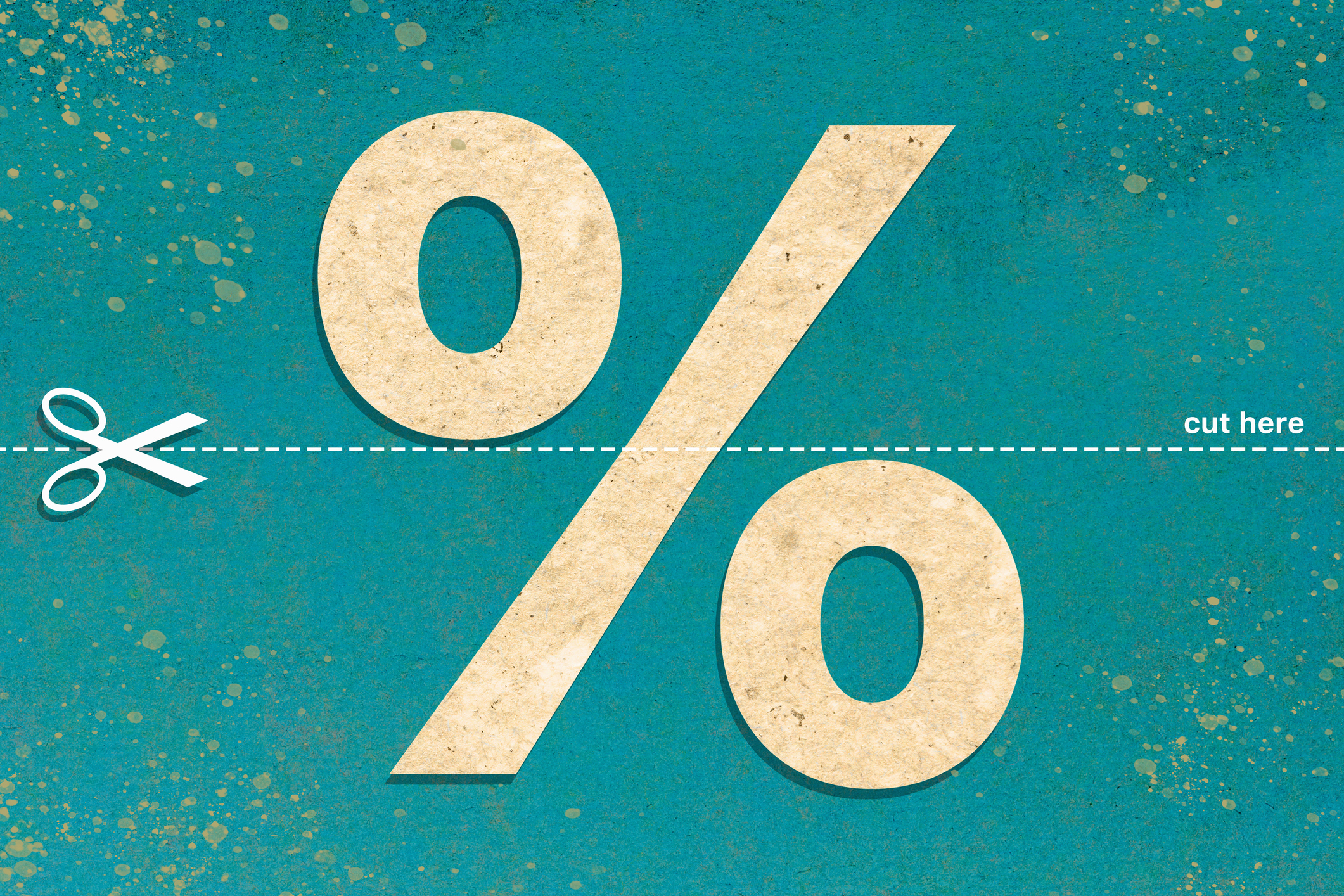Retirees, Make These Financial Moves Before the Fed Cuts Rates
The Fed will likely reduce interest rates in mid-September. Financial experts explain where retirees should invest now to boost retirement funds.


When the Federal Reserve gathers for its upcoming September meeting, it might do something it hasn’t done since December — implement an interest rate cut.
At this point, economists and Wall Street alike are pretty convinced that a rate cut is coming. While it might not be a drastic cut, it could have an impact on many consumers’ finances.
As a retiree, you could be wondering what moves to make — or not make — ahead of the Fed’s upcoming September 16-17 meeting. Here are a few things to consider.
From just $107.88 $24.99 for Kiplinger Personal Finance
Become a smarter, better informed investor. Subscribe from just $107.88 $24.99, plus get up to 4 Special Issues

Sign up for Kiplinger’s Free Newsletters
Profit and prosper with the best of expert advice on investing, taxes, retirement, personal finance and more - straight to your e-mail.
Profit and prosper with the best of expert advice - straight to your e-mail.
Consider your liquidity needs
It’s common for retirees to put money into longer-term bonds and CDs for stability and income. You might be inclined to rush into a long-term CD or bond ladder, given the potential for a September rate cut.
Rachel Gustafson, CFP, CCPS, and investment adviser representative at Financial Investment Team, says that might not be necessary.
“If the Fed does cut rates, we anticipate short-term rates to drop and long-term yields to remain close to where they are now,” she says. “Locking in longer-term rates may seem like the safe bet, but the smarter play is aligning with your liquidity needs.”
What Gustafson suggests is that, above all else, you have enough cash to cover your expenses for the foreseeable future. She also recommends that you not rely too heavily on investments in case there is a negative market event.
“In the next one to three months, high-yield savings accounts are the way to go,” she says. “Many are still paying 4% or more. For funds beyond three months, U.S. Treasuries and short-term CDs are the preferred route, even in light of upcoming Fed rate changes.”
If you’re not sure whether to focus on Treasuries vs CDs, think about your tax situation. Interest earned from U.S. Treasuries is tax-exempt at the state and local level. Even though some CDs might be offering better rates than Treasuries right now, you’ll need to consider the after-tax yield — especially if you’re in a high-tax state.
Choose your bonds strategically
Some retirees might be inclined to load up on bonds in light of a probable rate cut. Joseph W. Spada, CFP and private wealth adviser at Summit Financial Holdings, says that’s not necessarily a bad idea. However, it’s important to choose your bonds carefully.
"When rates drop, bonds that are currently on the market with higher coupons become more attractive, causing their price to rise,” he explains.
“Longer-term bonds that have more years remaining of higher coupon payments are especially attractive, causing their price to rise even more," Spada says. "For this reason, intermediate- to long-term bonds tend to perform well in a decreasing interest-rate environment.”
That said, Spada thinks stocks can also be a powerful tool for retirees at a time such as this, despite their inherent risk.
As he explains, when rates drop, "Companies can borrow at a lower rate and earn a better return on that borrowed money by investing it in their business. This is why it is important to own stocks when interest rates are declining.”
If you’re worried about volatility, you can aim for a mix of growth and dividend-paying stocks in your portfolio.
Make sure your portfolio is resilient and tax-efficient
Though you might be inclined to make major changes to your investment strategy to benefit from rate cuts, Gustafson says that might not be necessary.
“At this point, we don't see an immediate need to adjust portfolios ahead of the Fed’s upcoming decision,” she says. “The goal is not guessing the Fed’s next move. It’s about building resilience. Focus on building a portfolio that will hold up in any rate environment, not just the one that is making headlines.”
Spada agrees. "We advise our retired clients to focus on the total return … not just how much income each investment can produce,” he says. He also thinks tax efficiency needs to be part of the equation.
“Investments with high yields, such as CDs and corporate bonds, are often taxed at ordinary income tax rates and can have lower total returns,” he says. “Growth-oriented investments, like stocks, often benefit from more favorable capital gains tax treatment, reducing a client’s overall tax burden, as well as generating higher total returns."
All told, if you have an investment strategy that’s been working for you all along, you might not need to alter it tremendously to account for the Fed’s upcoming decision.
"Overall, we don't recommend trying to time interest rate moves,” Spada insists. A better approach might be to look at your portfolio holistically and make sure it’s well-balanced and designed to withstand market fluctuations.
Don’t get too caught up in the short term. Even with an interest rate cut looming, Spada insists that thinking long-term is still your best bet.
Read More
Profit and prosper with the best of Kiplinger's advice on investing, taxes, retirement, personal finance and much more. Delivered daily. Enter your email in the box and click Sign Me Up.

Maurie Backman is a freelance contributor to Kiplinger. She has over a decade of experience writing about financial topics, including retirement, investing, Social Security, and real estate. She has written for USA Today, U.S. News & World Report, and Bankrate. She studied creative writing and finance at Binghamton University and merged the two disciplines to help empower consumers to make smart financial planning decisions.
-
 What to Do If You Plan to Make Catch-Up Contributions in 2026
What to Do If You Plan to Make Catch-Up Contributions in 2026Under new rules, you may lose an up-front deduction but gain tax-free income once you retire.
-
 If You'd Put $1,000 Into Lowe's Stock 20 Years Ago, Here's What You'd Have Today
If You'd Put $1,000 Into Lowe's Stock 20 Years Ago, Here's What You'd Have TodayLowe's stock has delivered disappointing returns recently, but it's been a great holding for truly patient investors.
-
 How to Max Out Your 401(k) in 2026 (New Limits are Higher)
How to Max Out Your 401(k) in 2026 (New Limits are Higher)In 2026, the maximum contribution limits for 401(k) plans have increased, giving you an excellent shot at maximizing your retirement savings.
-
 What to Do If You Plan to Make Catch-Up Contributions in 2026
What to Do If You Plan to Make Catch-Up Contributions in 2026Under new rules, you may lose an up-front deduction but gain tax-free income once you retire.
-
 How to Max Out Your 401(k) in 2026 (New Limits are Higher)
How to Max Out Your 401(k) in 2026 (New Limits are Higher)In 2026, the maximum contribution limits for 401(k) plans have increased, giving you an excellent shot at maximizing your retirement savings.
-
 8 Practical Ways to Declutter Your Life in 2026: A Retirement 'Non-Resolution' Checklist
8 Practical Ways to Declutter Your Life in 2026: A Retirement 'Non-Resolution' ChecklistHere's how to stop wasting your energy on things that don't enhance your new chapter and focus on the things that do.
-
 To Retire Rich, Stop Chasing Huge Returns and Do This Instead, Courtesy of a Financial Planner
To Retire Rich, Stop Chasing Huge Returns and Do This Instead, Courtesy of a Financial PlannerSaving a large percentage of your income, minimizing taxes and keeping spending in check can offer a more realistic path to retiring rich.
-
 New Year, New Retirement Rules: Here's How You Can Keep Up as the Landscape Changes
New Year, New Retirement Rules: Here's How You Can Keep Up as the Landscape ChangesFor a successful modern retirement, prepare for a longer life, manage high health care costs and prioritize your social life and purpose.
-
 How We Manage Our Finances Together as a Married Couple
How We Manage Our Finances Together as a Married CoupleDouglas Boneparth, a certified financial planner, and his wife, Heather Boneparth, speak with Kiplinger about couples managing finances.
-
 How AI Is Changing the Way Americans Spend on Live Events
How AI Is Changing the Way Americans Spend on Live EventsAI bots are reshaping ticket prices, resale markets and how fans shop. Here's what it means for your wallet and how to get the best deals on concerts, sports and shows.
-
 7 Outrageous Ways Retirees Can Invest Their Money in 2026
7 Outrageous Ways Retirees Can Invest Their Money in 2026Stocks and bonds aren't the only ways to invest your retirement "fun money."